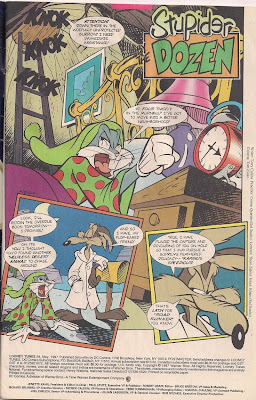Ever since the Warner Bros. "Looney Tunes" series began in 1930, the characters have had a side career in comics, both newspaper strips and comic books. This blog is dedicated to the comic books, which began in 1941 under the banner "Looney Tunes and Merrie Melodies Comics", licensed by producer Leon Schlesinger to Western Publishing for the Dell Comics line. Western would continue to publish comic books based on the Warner cartoon stars for over 40 years. Western would publish the characters' adventures under various titles ("Looney Tunes", "Bugs Bunny", "Porky Pig", Tweety and Sylvester, etc.) and comic lines (Dell, Gold Key, Whitman) until eventually ceasing publication in the 1980's. D.C. Comics picked up the baton in the 1990's, publishing a few Bugs Bunny specials before beginning a long-running series of "Looney Tunes" comics in 1994 that continues today.
On this blog, we will take a look at stories from these comics, the good, the bad, the ugly and the just plain bizarre. Some are brilliant, some are insipid. Some boast gorgeous artwork, some are painfully off-model. You are about to see a Looney Tunes universe that is often very different from the animated cartoons.
The writers and artists for the comics of the Dell/Gold Key era are uncredited, and the records of who created what are believed to be lost. Thankfully, the modern D.C. comics include credits. Known or anonymous, these writers and artists deserve to be recognized, at the very least, by the work they created with some of the most timeless cartoon characters of all time. This blog is dedicated to them.
Enjoy! Stories will be posted often!
Stay "tooned"...
-Matthew Hunter






















































